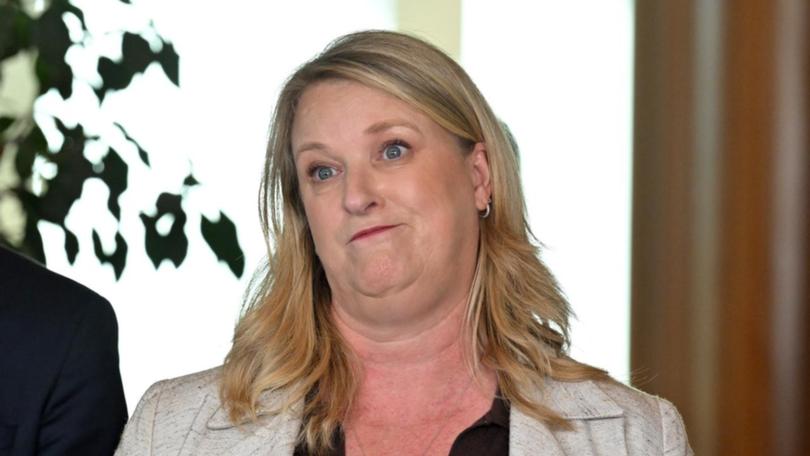Teal MP Kylea Tink learns hard way that politics is brutal as North Sydney seat abolished

Politics can be a brutal business and rarely more than when, with the stroke of a pen on a map, the independent electoral commission puts someone out of a job.
Just ask Kylea Tink.
Redistributions are one of the few areas politicians have zero control over — although the alternative of partisan gerrymandering should be unpalatable to defenders of democracy.
Sign up to The Nightly's newsletters.
Get the first look at the digital newspaper, curated daily stories and breaking headlines delivered to your inbox.
By continuing you agree to our Terms and Privacy Policy.The Australian Electoral Commission on Friday released its draft redistribution for NSW, which abolishes the seat of North Sydney that Ms Tink won from the Liberals as part of the teal wave of victories in 2022.
That decision has a ripple effect out across the state as other boundaries shift — sometimes dramatically — to adjust to population trends.
Ms Tink was emotional on Friday as she faced media.
“I didn’t run for the seat of North Sydney because I believed I had all of the answers, I ran because my community asked me to run,” she said.
“Having had an hour and a half to come to terms with a boundary redraw and being a mother and having other things, I think for me, what this has created is a moment in time where it brings me back to what my job is right here and right now, which is to represent the seat of North Sydney.
“As to what happens going forward, I don’t know.”
The redistribution is a mixed bag for the major parties across the harbour city.

Voters from Ms Tink’s seat on Sydney’s north shore will be split between the neighbouring seats of Bennelong, Bradfield and Warringah.
That makes Bennelong — won by Labor’s Jerome Laxale by just 1954 votes — tougher but not impossible for the Government to retain.
But it also puts Liberal frontbencher Paul Fletcher in trouble from the self-appointed shadow member for Bradfield, independent Nicolette Boele.
But other independents fare much better, notably Sophie Scamps in Mackellar and Allegra Spender in Wentworth.
The latter takes in all of Darlinghurst and Potts Point for the first time, which electoral analyst Ben Raue predicts will more than double Ms Spender’s margin from 4.2 per cent to 9 per cent.
“Wentworth is lost to us now,” one Liberal lamented.
Mackellar might still be possible to retake if the party chooses a strong candidate. Labor thinks the same about Fowler where non-teal independent Dai Le won in 2022.
The flow-on effect from the changes in the north narrows Labor’s margins in western Sydney seats including Parramatta and Greenway.
In the longer term, this might be better for the Liberals if they can chip away at these outer suburban areas that were once home to Howard’s battlers.
On the outskirts of Sydney, the margin in Liberal-held Hughes halves from 7 per cent to 3.5 per cent after Labor-leaning areas from Campbelltown are added.
Shadow treasurer Angus Taylor’s seat of Hume shrunk significantly to become more focused on southwestern Sydney rather than rural NSW.
It means his hometown of Goulburn is no longer in the electorate; it shifts into Eden-Monaro, held by junior minister Kristy McBain.
That makes her already diverse seat even more so as it takes in the communities of the NSW South Coast, Snowy Mountains and Queanbeyan on the outskirts of Canberra as well as Goulburn.
Overall, margins in eight of the nine Liberal seats in the state go backwards plus the party has fallen away against two independents.
Conversely, just 12 of 25 Labor seats have gone backwards and the others are either steady or better for the Government.
The brutality of these numbers — along with the loss of Higgins in Victoria and the addition of Bullwinkel in WA — will have politicos crunching stats to find their pathway to victory as we hurtle towards the next election.

